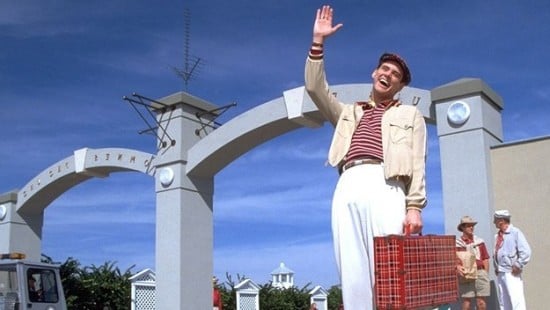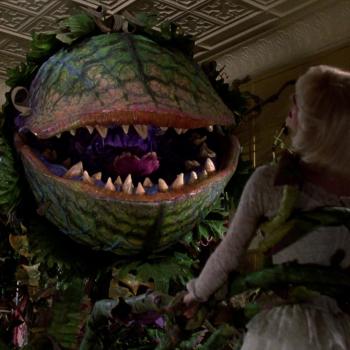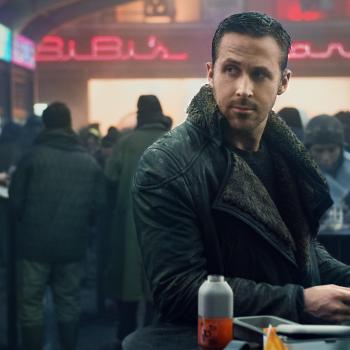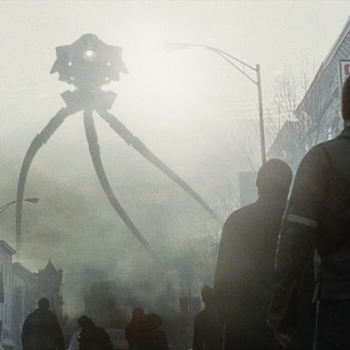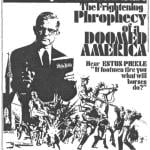Lifelong vacation
Located on Florida’s gulf coast between Panama City Beach and Pensacola lies a scenic stretch of highway. It’s a favorite vacation destination for my family. On the outskirts of the tacky tourist traps and away from the Hard Rock Cafes, Margaritavilles and crowded public beaches, this winding stretch of coastal road is home to several resort towns featuring quaint shops, unique restaurants and beachfront views. With its beautiful picket fences, pastel homes and quaint walking paths, I’ll often visit several times in one trip. I can spend hours browsing its bookstores, walking its streets, or kicking off my shoes and running to the beach.
The town, Seaside, was an ideal location for Weir to film “The Truman Show.” The film takes place in the fake city of Sea Haven, constructed in a massive dome just outside of Hollywood. Truman Burbank (Jim Carrey), a child adopted to star in a reality TV show, has grown up believing it’s all real. The first step to making sure he never thinks about leaving? Place him in a town where packing your bags would be the last thing on your mind. Seaside’s re-creation of an idealized small-town America is nearly too perfect. It’s quiet, safe and expensive without being pretentious. The area has an average of 320 days of sunshine each year. If I wanted to create a town no one would ever leave, I would build Seaside. When I’m there, I dream of convincing my wife to quit our jobs and open a burger shack on the beach, far from the bills, responsibilities and cold weather of Michigan.
Truman is not, technically, on vacation — he still has to go to work, tend the lawn, etc. But his life is designed like one, organized and planned out so that he’ll never think of leaving his sunny, pastel home. The challenges he faces in every day/episode have been thought out by writers and carried out by actors. Everyone greets him warmly, and he returns in kind with his trademark “good afternoon, good evening and goodnight.” Truman’s best friend shows up with a six-pack at just the right time and his wife Meryl (Laura Linney) is always ready with a smile and a hot meal. Constant product placement reminds him just how great all of his stuff is, and if things get frustrating, he can just go buy a new lawnmower.
Why would he ever want to leave? It’s safe. It’s sunny. It’s predictable. The newspapers trumpet stories about Sea Haven’s greatness. Television programs reinforce the joys of small-town living and familial proximity. The local travel agency actually discourages traveling — in a clever visual gag, the office has a poster of an airplane being struck by lightning. The radio announcer cheerfully asks Truman whether he plans on making any trips, and the bus drivers and ferry operators don’t even know how to work their vehicles.There’s no real risk in Sea Haven, no danger to Truman’s life — even his biggest fear been manufactured to keep him from venturing too far out. And if Truman starts thinking about leaving, his friends are there to coax him back down — with some help from the writers, of course.
Because it’s not real. It’s not free.
It’s the Matrix.
I’ve seen “The Truman Show” close to a dozen times, but it’s only recently that I’ve noticed similarities to the Wachowski’s sci-fi epic, which would come out the next year. In “The Matrix,” Neo learns that what he assumed was the real world was actually a complex computer simulation designed to keep humans comatose while they provided power for machines. The film’s bleak, grimy and grey — the tonal antithesis of the colorful “Truman Show.” But doesn’t Sea Haven exist for the same reason: To turn Truman into a power source for a corporation? Isn’t he kept pacified so that he can draw ratings and help companies sell their products?
Granted, in the Matrix, every human being is enslaved to the machines. In “The Truman Show,” only one resident of Sea Haven is unaware of what’s going on. But the program’s insidiousness is missional, ensnaring people outside of the dome, far away from Sea Haven’s beaches.
Several times throughout, Weir cuts to the people who watch “The Truman Show.” There are entire bars formed around the program, where people gather to drink and watch episodes together. Two women watch while knitting a Truman quilt. One man appears to never leave his bathtub, where he has a TV set up. The show’s creator, Cristof (Ed Harris), boasts that some people keep the show on while they sleep.
People are ensnared by the show. It becomes the source of their social lives — or the reason for a lack of one. It’s a political cause for others to rally behind. Those with real problems can get lost in the assurance that, no matter what happens to them, Truman will still tell his neighbors “good afternoon, good evening and good night.” Loneliness isn’t a problem when you can spend all evening watching someone else’s life unfold. And if you’re bummed that your life doesn’t look like Truman’s — well, there’s always the Truman Show catalog, where you can order all the products and clothes worn on the program.
Entertainment and marketing pacify Truman — particularly that part of him that wants to break free of Sea Haven and explore. The show’s creators weave a narrative that tells him that the good life is found close to home; only danger exists outside. That same industry tell viewers what a “good life” looks like — a nice home in a cheery suburb, with a wife who will remind you to keep upgrading to the best stuff. It’s the same tactic we see in our cultures — buy this, move here and pursue this in order to keep ourselves busy and drown out that voice that tells us there’s more. We don’t ask questions — we assume it’s normal. “We accept the reality with which we’re presented,” Christof says — and it’s just as true for us as it is for Truman.
But like I said, the heart nags, and forces beyond our understanding conspire to wake us up. For Truman, reality is about to come crashing in.

